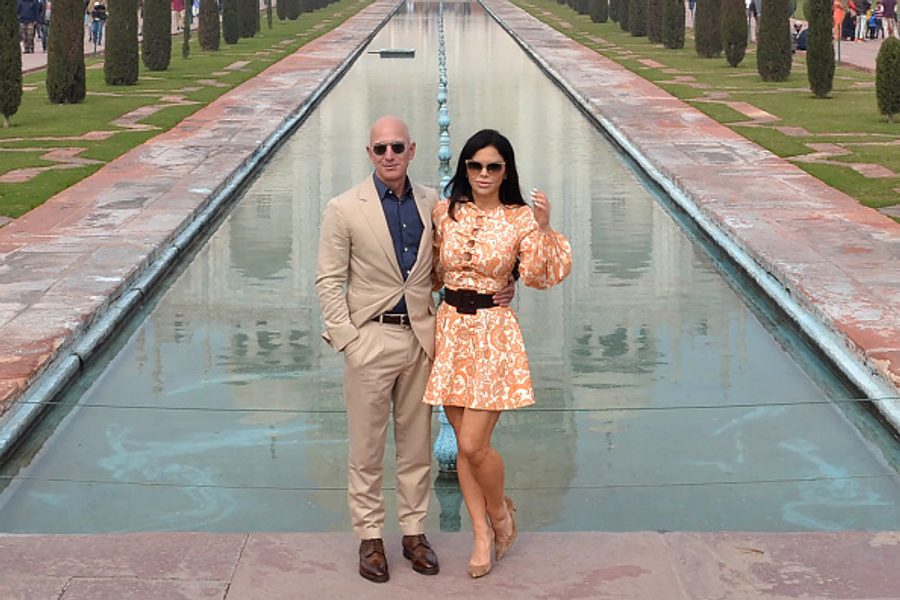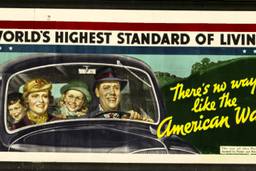The Problem Isn't That People Are Greedy—It's That They're Capitalist
Capitalism’s ethos of “grow or die” comes at our expense.
Hadas Thier

The following is an excerpt from A People’s Guide to Capitalism: An Introduction to Marxist Economics (Haymarket Books, August 2020).
Competition is the beating heart of capitalism. Market competition acts as a discipling force, which compels capitalists to constantly “accumulate”: to transform profits into further investments.
It isn’t the case that each capitalist wants to make a greater profit than his neighbor so that he’ll feel himself a bigger man (though it’s true that most capitalists are men). Nor is the drive for profit driven by his insatiable thirst for more luxuries. Rather, he desperately needs to accumulate more capital in order to get hold of the latest, most efficient, laborsaving automation. The bigger the profit of an individual capitalist, the more quickly he’ll be able to invest in these technologies, ahead of his competitors. In the words of Dell Computers founder and CEO, Michael Dell, corporations must “grow or die.”
As Friedrich Engels explained:
We have seen that the perfectibility of modern machinery, developed to the highest degree, becomes transformed by means of the anarchy of production in society into a compulsory law for the individual industrial capitalist constantly to improve his machinery, constantly to increase its productive power. The bare factual possibility of extending his sphere of production, becomes transformed, for him, into a similar compulsory law. The enormous expansive force of modern industry, in comparison with which that of gases is veritable child’s play, appears now before our eyes as a qualitative and quantitative need to expand which laughs at all resistance.
In the auto industry, for instance, the average time between redesigns of new models is five years. Automobile technology for electric motors, multispeed automatic transmissions, battery power, and engine power is continually updated to provide “more car for your money.” If a car company comes out with a new vehicle that does not significantly improve upon older models, it will spend those years between redesigns losing market share until it can produce a new model.
Marx, therefore, made the point that it is not enough to generate profit; it must be reinvested. The part of profit that is consumed by capitalists themselves is revenue, while the part that is employed as capital is accumulated. If bosses merely spent their profits on luxuries, production would not expand, and capitalists would not have the means to innovate. “[W]hat does this surplus product [profit] consist of?” asked Marx: “Only of things destined to satisfy the needs and desires of the capitalist class, things which consequently enter into the consumption fund of the capitalists? If that were all, the cup of surplus value would be drained to the very dregs, and nothing but simple reproduction would ever take place.”
Of course, the ruling class does spend an exorbitant amount of money on themselves. Millions of dollars are poured into mansions, yachts, parties, watches, art, and all manner of sundry luxuries. Venture capitalist Marc Bell recently put his Boca Raton mansion up for sale for nearly $25 million, so he could move into larger digs in Miami. Along with a “natural” swimming pool that features waterfalls over sculpted stone, a spa and a basketball court on the property’s 1.6 acres, his mansion also includes a “Star Trek” home theatre, which replicates the main bridge of the Starship Enterprise, complete with proper “swooshing” sounds every time the doors open or close.
As a 2018 Oxfam report revealed, the richest forty-two people own the same combined wealth as the world’s poorest 3.7 billion. In the US, the wealth of the three richest people equals that of the bottom half of the population. This gap grows by the day. In the economic crisis emerging alongside the COVID-19 pandemic, the rich are making a killing. According to the Institute for Policy Studies:
Between March 18 and April 10, 2020, over 22 million people lost their jobs as the unemployment rate surged toward 15 percent. Over the same three weeks, U.S. billionaire wealth increased by $282 billion, an almost 10 percent gain.
Yet despite their preposterous lifestyles, and the barbarity of the growing inequality between rich and poor, capitalists, too, are like gold-studded cogs in the wheels of the system. As Marx explained: “[C]ompetition subordinates every individual capitalist to the immanent laws of capitalist production, as external and coercive laws. It compels him to keep extending his capital, so as to preserve it, and he can only extend it by means of progressive accumulation.”
If Henry Ford had contented himself with blowing the profits from the first series of Model Ts on a fancy vacation, rather than investing in new technologies, another company would have been first to innovate car production. Ford would have become a footnote in the history of U.S. capitalism.
History is riddled with such footnotes of companies that fail to innovate and then go under. Consider Blockbuster, once a multibillion-dollar entertainment company, with over 9,000 stores and 60,000 employees. the company took a rather abrupt turn to uselessness and bankruptcy when it failed to stay ahead of streaming technologies. Blockbuster passed up an opportunity to buy a then-small company named Netflix for $50 million in 2000, unaware that most people would be watching their shows and movies through the internet before long. Netflix soon drove Blockbuster out of business.
This is why both Marc Bell and his Star Trek-styled mansion, and Ben Cohen and Jerry Greenfield, founders of Ben and Jerry’s “caring capitalism” ice-cream, are all disciplined by the same forces of the market, and are all compelled to accumulate, or face bankruptcy. Marc and Ben and Jerry, whatever their personal feelings about capitalism or Star Trek, must make enough profit to plow back into further innovation and production. As Marx famously described:
Accumulate, accumulate! That is Moses and the prophets! ‘Industry furnishes the material which saving accumulates.’ Therefore, save, save, i.e., reconvert the greatest possible portion of surplus value or surplus-product into capital! Accumulation for the sake of accumulation, production for the sake of production: this was the formula in which classical economics expressed the historical mission of the bourgeoisie in the period of its domination. Not for one instant did it deceive itself over the nature of wealth’s birth-pangs.
We can see then that in reality the movement of capital cannot be a linear process with a beginning and end, but a continuous one, which must spiral in growth. When the system is running smoothly, capitalists don’t sit on the cash they’ve made; profits are shoveled back into new rounds of production. Cash from this quarter’s auto, health services, or iPhone sales is used to finance next year’s models. Each round of production thus proceeds from a more advanced position than the last, built on the larger amount of money generated by the previous cycle.
Assuming a rate of profit (a concept I take up elsewhere in my book) of 50%, if a business begins by investing $20,000 and producing an end value of $30,000, by the second round of production, instead of a $20,000 investment producing value of $30,000, we can now start with $30,000 and end up with $45,000. As Marx wrote: “Looked at concretely, accumulation can be resolved into the production of capital on a progressively increasing scale. The cycle of simple reproduction alters its form and, to use Sismondi’s expression, changes into a spiral.”
This spiraling buildup of wealth brings us to the definition of capital as the self-expansion of value. On an individual basis, each capitalist has no choice but to expand profits and investments or face insolvency. On a system-wide basis, this translates to an economy that must grow without bounds. As David Harvey explained: “Just read the press reports on the state of the economy every day, and what are people talking about all the time? Growth! Where’s the growth? How are we going to grow? Slow growth defines a recession, and negative growth a depression. One or 2 percent growth (compounded) is not enough, we need at least 3, and only when we reach 4 percent is the economy deemed to be ‘healthy.’”
Contrast capitalism’s desperate drive to accumulate and grow — at any human or ecological cost — with a socialist, planned economy. Marx and Engels have been widely misinterpreted on the question of growth. They did celebrate the productive capacity of capitalism and saw it as laying the basis for a world of abundance that could make socialism possible. One famous passage from the Communist Manifesto reads:
The bourgeoisie, during its rule of scarce one hundred years, has created more massive and more colossal productive forces than have all preceding generations together Subjugation of nature’s forces to man, machinery, application of chemistry to industry and agriculture, steam navigation, railways, electric telegraphs, clearing of whole continents for cultivation, canalization of rivers, whole populations conjured out of the ground — what earlier century had even a presentiment that such productive forces slumbered in the lap of social labor?
But Marx and Engels’ seeming appreciation of the productive forces of capital had more to do with the future possibilities embedded within them, and nothing to do with the destructive manner in which they currently manifest. The subjugation of nature to man, they noted in many of their writings, has deadly effects, not just to the natural world around us, but to humankind, which is itself a part of nature. As Engels wrote: “Thus at every step we are reminded that we by no means rule over nature like a conqueror over a foreign people, like someone standing outside nature — but that we, with flesh, blood and brain, belong to nature, and exist in its midst, and that all our mastery of it consists in the fact that we have the advantage over all other creatures of being able to learn its laws and apply them correctly.”
Marx and Engels were very much against the destruction and degradation wrought by capitalism’s endless growth of commodities. At the same time, they understood that these same forces have created the conditions for a new society. “The development of the productive forces of social labor is capital’s historic mission and justification,” they wrote. “for that very reason, it unwittingly creates the material conditions for a higher form of production.” Socialism would advance the development of society’s productive capacity. But the production of goods that do not have price tags attached would lead to a very different dynamic.
Rather than the compulsion to produce more and more stuff in order to accumulate more and more profits, the purpose of production in a socialist society would be use, rather than profit. Human need would therefore drive decision-making, and would propel forward advances in technology and research for more efficient and sustainable production. Capital relies on “planned obsolescence” of goods made with nondurable and shoddy materials, or “upgrades” in designs, which render our expensive technology useless within a year or two. This is one of the many ways that we are continually induced to buy more. Socialized production, on the other hand, would allow us to develop methods that produce durable and ecologically sustainable goods. Simultaneously, we could cut the amount of labor time for necessary for production, and thereby increase our free time and unleash the creative potential of human beings unencumbered by dreadfully long work weeks.
Many things can and should stop being produced immediately — like military arms, and advertisements. Others ought to be drastically reduced as quickly as possible, including cars and plastics. A socialist society would therefore need to tackle planning a system of public transportation that ends the need for cars. Beyond that, a future society will have to take up complex questions in facilitating the satisfaction of human need without destroying the earth that we live on. for instance, how do we want to organize food production? Research indicates that multi-crop, rotating agriculture, which is significantly more sustainable for the soil, can also produce more crops than the common methods of corporate farming.
Capitalism forces us into a spiral of accumulation for the sake of accumulation. Planned development to improve the quality of life for the vast majority of humanity on the basis of sustainable production and planning is its polar opposite. That is the vision of a socialist society. From there, wrote Marx, “the private property of particular individuals in the earth will appear just as absurd as the private property of one man in other men. Even an entire society, a nation, or all simultaneously existing societies taken together, are not owners of the earth. They are simply its possessors, its beneficiaries, and have to bequeath it in an improved state to succeeding generations, as boni patres familias [good heads of the household].”
Hadas Thier is an activist and socialist in New York, the author of A People’s Guide to Capitalism: An Introduction to Marxist Economics, and a regular contributor to Jacobin Magazine. She tweets at @HadasThier.







